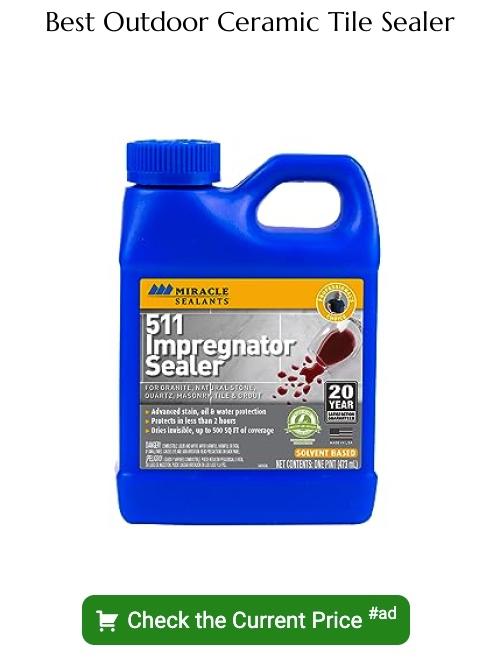Last updated on
Yes, ceramic tile can be used outside if it’s specifically labelled as frost resistant, meaning it can withstand freeze-thaw conditions.
I’m proud to have penned this comprehensive guide on outdoor tiles, complete with unique designs I personally created – my hope is that you find it as inspiring and enjoyable as I found the process of creating it.
Ceramic tiles can indeed be used outdoors, but with some important considerations. They are available in a variety of designs, making them a versatile choice for patios, walkways, or pool areas.
However, not all ceramic tiles are created equal. Those with a high porosity or low frost resistance may not withstand harsh weather conditions. Therefore, it’s crucial to choose a tile specifically designed for outdoor use.
In this article, you’ll find comprehensive information on how to select and install the right ceramic tile for your outdoor project, ensuring durability and aesthetic appeal.
Key takeaways:
- Ceramic tiles can be used outside if labeled frost resistant.
- Consider durability, versatility, and style when choosing outdoor ceramic tiles.
- Easy maintenance and no need for ongoing treatment or sealing.
- Factors to consider when choosing outdoor ceramic tiles include slip resistance, finish, and frost resistance.
- Proper installation and preparation are crucial for outdoor ceramic tiles.
Durability of Outdoor Ceramic Tiles
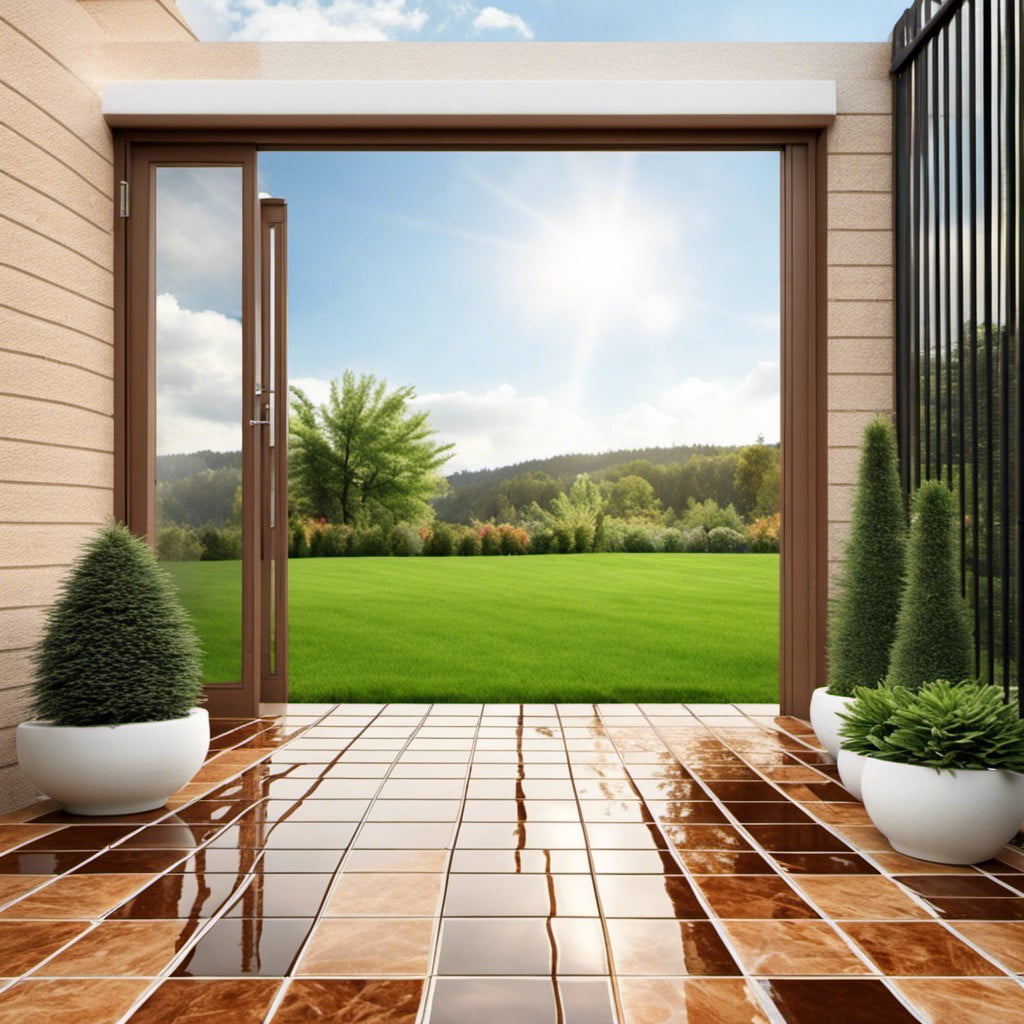
Despite their delicate appearance, ceramic tiles are quite resilient. Constructed from clay, sand, and water, these tiles are baked at high temperatures to create a hard, sturdy surface.
This process results in a product that is resistant to wear and tear, making them an excellent choice for high-traffic outdoor areas. Additionally, they are less likely to crack or break upon impact compared to other types of outdoor flooring materials.
However, it’s important to note that not all ceramic tiles are equal. Those with a lower absorption rate are more resistant to frost damage, a crucial factor to consider for outdoor use.
Versatility and Style of Ceramic Tiles for Outdoor Use
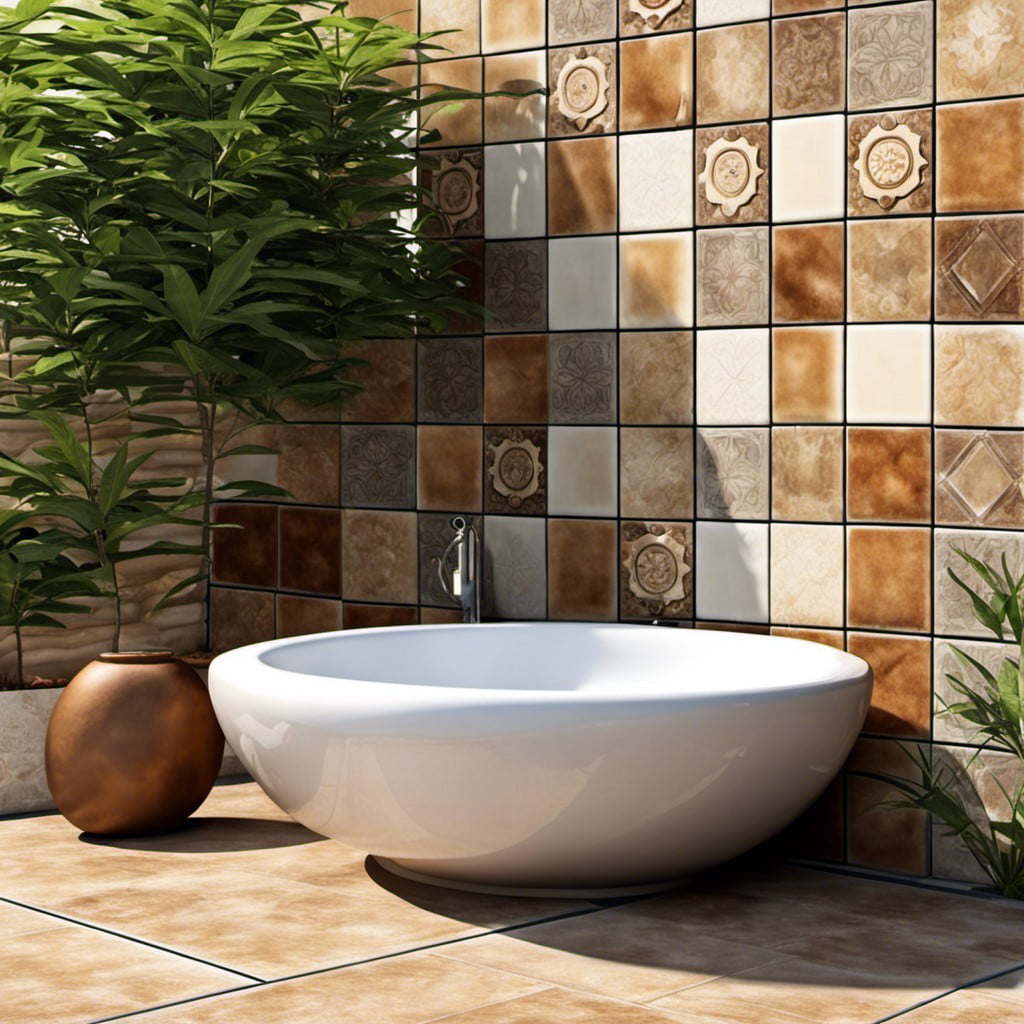
Ceramic tiles provide an aesthetic boost in every setting. These tiles are available in a vast range of colors, patterns, and textures. Whether your style leans more towards rustic charm or modern sophistication, you can find a ceramic tile to suit your preference.
For outdoor settings, consider using ceramic tiles with earth-toned colors and stone-like patterns to seamlessly blend with the natural environment. Alternatively, bright, patterned ceramic tiles can create a visually striking feature area, ideal for patios or outdoor kitchen spaces.
Moreover, these tiles are not just eye-catching but flexible in their use. You could employ ceramic tiles for a splashback outdoors, on stair risers, benches, or planters. Thus, adding a uniquely personal touch to your exterior spaces.
Easy Maintenance of Outdoor Ceramic Tiles
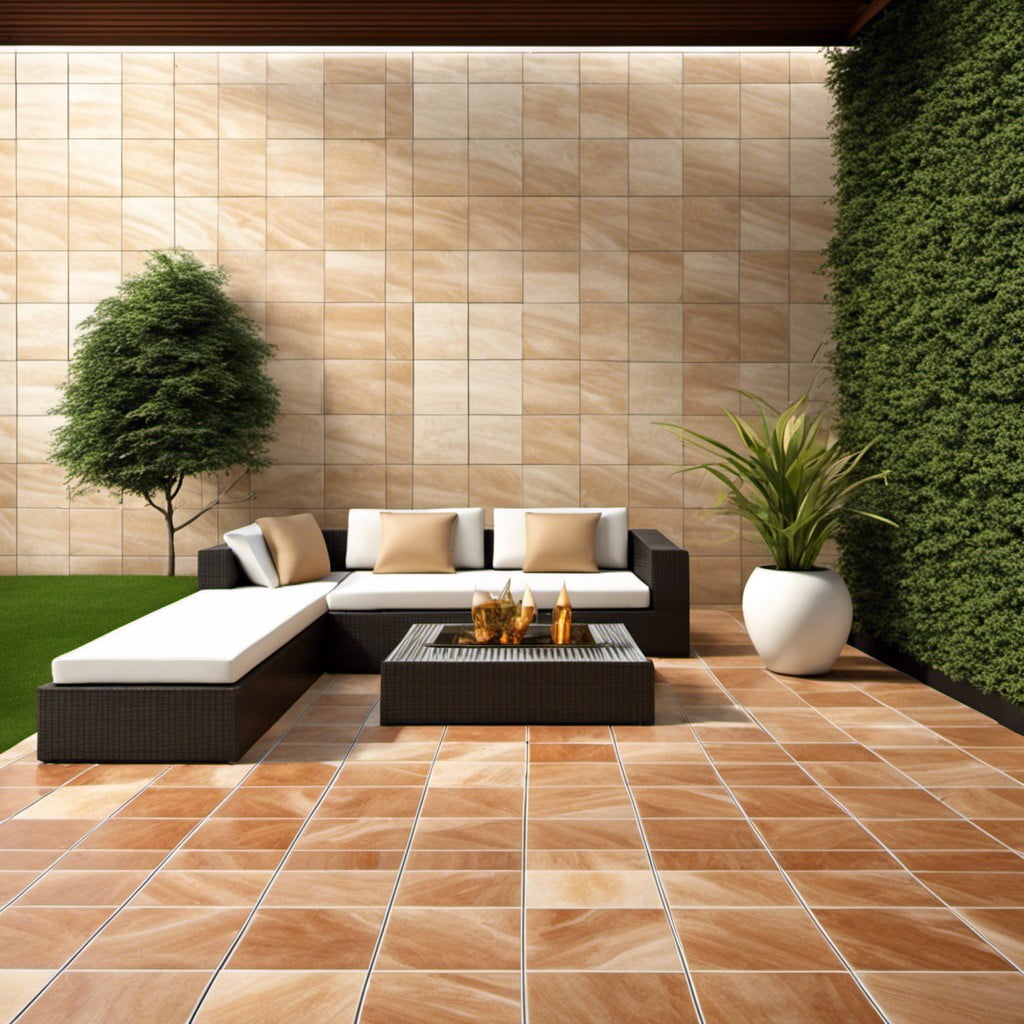
Standard upkeep for these tiles primarily involves routine sweeping to clear detritus and prevent grime building up. For stubborn dirt, a mild soap solution used with a soft brush can work wonders.
Unlike some other outdoor materials, there’s no need for sealing, staining or ongoing treatment once the tiles are installed. They’re inherently resistant to both fading and staining, ensuring their appearance remains as vibrant as the day they were laid.
One thing to note, prolonged exposure to water may cause mold or mildew; hence, occasional drying or systematic drainage can be beneficial.
Choosing the Right Ceramic Tile for Outdoor Use
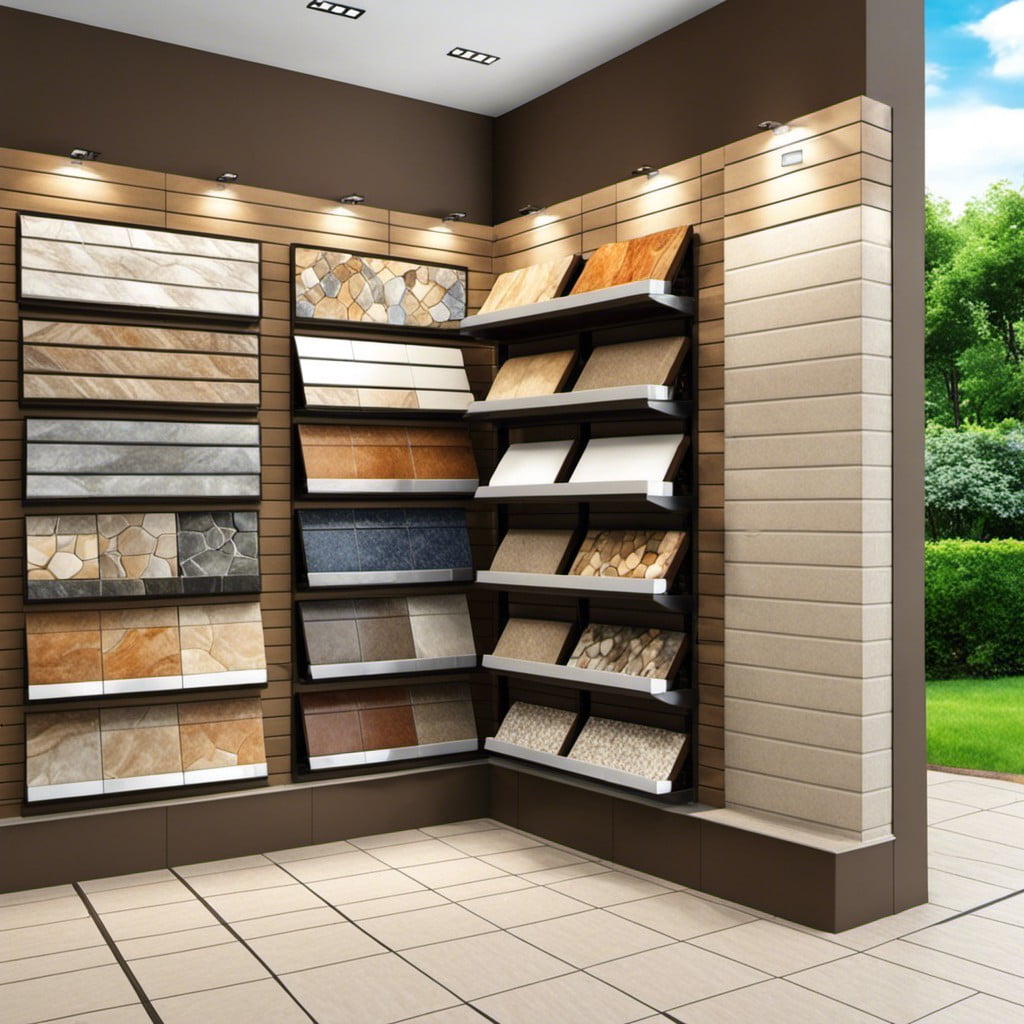
When selecting the best style for your outdoor space, you’ll need to keep in mind several factors. First, assess the slip resistance of the tile. For areas near pools or fountains, opt for a tile with a high slip resistance rating.
Next, focus on the tile’s finish. Glazed tiles are susceptible to scratching, while unglazed ones are prone to staining. But with a sealant, a glazed tile can work well in an outdoor setting.
Also, consider the frost resistance. In regions prone to freezing temperatures, frost-resistant tiles are a necessity.
Finally, reflect on the aesthetics. Choose a color and texture that blends with your home’s exterior. Tiles are available in a variety of colors, styles, and finishes to perfectly match your design aspirations.
Comparison Between Outdoor Ceramic Tile and Porcelain Tile
While both are excellent options for outdoor settings, there are a few key differences to consider. The durability of porcelain typically supersedes that of ceramic due to its through-body composition. This means the color and texture run through the entire thickness of the tile, reducing the visibility of chips or scratches.
Ceramic tiles, while robust, can show wear more visibly due to their glazed surface. However, they offer an appealing variety of designs and hues for creating unique outdoor spaces. Also, ceramic tiles are generally more budget-friendly than porcelain, making them an accessible choice for many homeowners.
A significant point to note is the tiles’ resistance to water absorption. Porcelain tiles are often rated more water-resistant than ceramic tiles, a crucial factor for outdoor usage. But with proper sealing and maintenance, ceramic tiles can also hold up well in exterior conditions.
Finally, the installation process of porcelain can be slightly more labor-intensive than ceramic due to its density, adding to the project’s overall cost and time frame. Therefore, consider balancing aesthetics, budget, and functionality when deciding between them for your outdoor space.
Installation Considerations for Outdoor Ceramic Tiles
When planning to install ceramic tiles outdoors, it’s crucial to select a suitable adhesive that can withstand extreme temperatures and weather conditions. Waterproof and frost-resistant adhesives are generally recommended to prevent cracking and loosening of the tiles. The underlayment also plays a significant role. A concrete slab base is considered beneficial given its durability and supportive characteristics.
Preparation is key. Substrate surfaces need to be clean, flat, and dry. Uneven surfaces may lead to cracking due to the pressure applied on tiles. Next, the layout—starts from a central point to ensure symmetry. Remember, the tiles must slope away from the house for good-drainage.
Sealing is another important aspect. Use a quality sealant post-installation, particularly ensuring grout lines are well-sealed to promote longevity and avert stains or damage. Finally, consider hiring a professional tiler to mitigate the risk of improper installation, contributing to the longevity of your outdoor ceramic tiles.
Impact of Weather Conditions On Outdoor Ceramic Tiles
Extreme cold can spell trouble for ceramic tiles, as they may crack under the stress of freeze-thaw cycles. If you reside in an area with harsh winters, opting for ceramic tiles specifically designed for outdoor use, which can withstand such harsh conditions is advisable.
Hot, sunny climates aren’t perfect either. Tiles may fade over time due to prolonged exposure to direct sunlight. A UV-protected tile can help circumvent this issue, preserving colors for longer periods.
When considering changing seasons, keep in mind that tiles can become slippery when wet. Tiles with non-slip finishes or textures can provide enhanced safety under these conditions. Seasonal debris like fallen leaves can also stain certain types of tiles, so choosing a dark-colored or stain-resistant tile could be helpful.
Finally, remember that sudden changes in temperature can cause thermal shock in tiles, resulting in cracks. Choosing high-density, non-porous tiles can prevent this issue, offering durability amidst changing weather conditions.
FAQ
Will ceramic tile crack outside?
Yes, ceramic tile can crack outside specifically if water freezes under the tiles, causing movement and subsequent cracking.
What kind of tile is best for outdoor use?
The best kind of tile for outdoor use is porcelain pavers due to their superior durability, slip-resistant texture, and versatility.
Can ceramic wall tiles be used outside?
No, ceramic wall tiles should not be used outside as they are not frost-prone and can crack in cold weather due to their lower density that leaves room for moisture expansion.
How does weather affect ceramic tile outdoors?
Outdoor ceramic tiles can be affected by weather conditions such as frost, heavy rain, and extreme heat, which can lead to cracking, discoloration, or degradation over time.
Is it necessary to seal outdoor ceramic tile?
Yes, it is necessary to seal outdoor ceramic tile to protect it from damage and deterioration due to weather conditions and frequent use.
What are ideal installation techniques for outdoor ceramic tiles?
Ideal installation techniques for outdoor ceramic tiles include ensuring a properly prepared and clean surface, using a suitable outdoor adhesive, arranging tiles with spacers for even grout lines, and then sealing them with a suitable sealant.
Recap:
